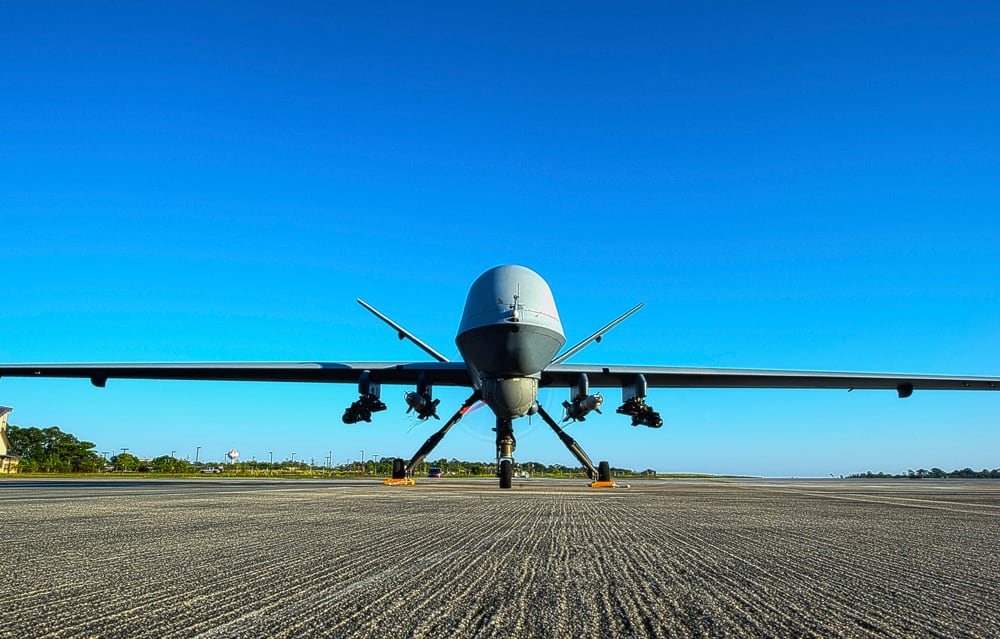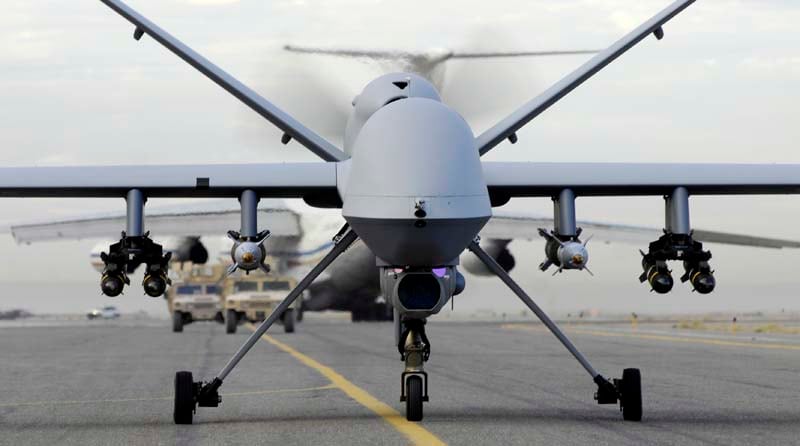“The first strike occurred at approximately midnight local Somalia time with the second separate strike occurring at approximately 11 a.m. local Somalia time,” a statement from AFRICOM reads.
According to a U.S. defense official, the strike was conducted by an unmanned aircraft.
The strike is the first time U.S. forces have targeted ISIS in the region.
U.S. airstrikes in Somalia have generally been targeted at al-Shabab militants. U.S. efforts to target al-Shabab militants have recently ramped up. There were three strikes alone in September that killed at least 10 al-Shabab militants Sept. 6-13, according to press releases from U.S. Africa Command.
RELATED

However, Friday’s strike marks the first time U.S. forces have targeted ISIS in the region and may be an indicator the terror group is trying to reconstitute itself in the Horn of Africa after suffering massive territorial losses in Iraq and Syria.
Army Sgt. Major John Wayne Troxell, the senior enlisted adviser to chairman of the Joint Chiefs of Staff Gen. Joseph Dunford, told reporters on Monday that he expected ISIS would try to rebuild itself in east and west Africa.
But ISIS is known to have a base of operations in the Golis Mountains in Puntland, Somalia, Bill Roggio, a senior fellow at the Foundation for Defense of Democracies and editor of FDD’s Long War Journal, told Military Times.
RELATED

“The Islamic State’s branch in Somalia is led by Abdulqadir Mumin. He and an estimated 20 fighters defected from Shabab in 2015 and swore allegiance to Abu Bakr al-Baghdadi,” Roggio said.
“Mumin has operated a makeshift training facility, known as the ‘Commander Sheikh Abu Numan Training Camp’” in Puntland, he said. He is listed by the U.S. as a “Specially Designated Global Terrorist,” Roggio explained.
But “the reported U.S. airstrikes occurred near a port town, Qandala, that the group [ISIS] had seized for just over a month in October 2016,” said Maher Farrukh, an al-Qaida analyst at the American Enterprise Institute.
“In 2017, ISIS’ attacks have primarily been in the same region as Qandala, the most recent being an improvised explosive device (IED) attack targeting a police station in Basaso,” he added.
ISIS has also claimed some low-level attacks in Mogadishu, according to Farrukh.
As ISIS’ self-proclaimed caliphate has crumbled in Iraq and Syria with the liberation of Mosul and ISIS’ capital of Raqqa, U.S. warplanes have had a spate of strikes against ISIS fighters in Libya and Yemen.
There was a series of eight airstrikes launched against ISIS fighters camped outside the city of Sirte in the Libyan desert at the end of September. Those were the first series of strikes since a U.S. B-2 bomber hit a large ISIS camp in January.
And in mid-October, U.S. strikes over a 10-day period killed 60 ISIS fighters in Yemen and destroyed an ISIS training facility. Those strikes were also the first against ISIS in the region. U.S. air strikes in Yemen have generally targeted al-Qaida in the Arabian Peninsula, or AQAP.
RELATED

U.S. officials also believe the Islamic State was behind the ambush in Niger on Oct. 4 that killed four U.S. soldiers.
The U.S. military is keeping the pressure on ISIS outside of Iraq and Syria as its territorial holdings in the region collapse. Iraqi forces are currently engaged in an operation to liberate al-Qaim and Rawa, the last territory in ISIS’ hands in Iraq.
But “compared to al-Shabab, ISIS’ presence in Somalia is not very significant,” Farrukh said.
Shawn Snow is the senior reporter for Marine Corps Times and a Marine Corps veteran.
Tara Copp is a Pentagon correspondent for the Associated Press. She was previously Pentagon bureau chief for Sightline Media Group.





